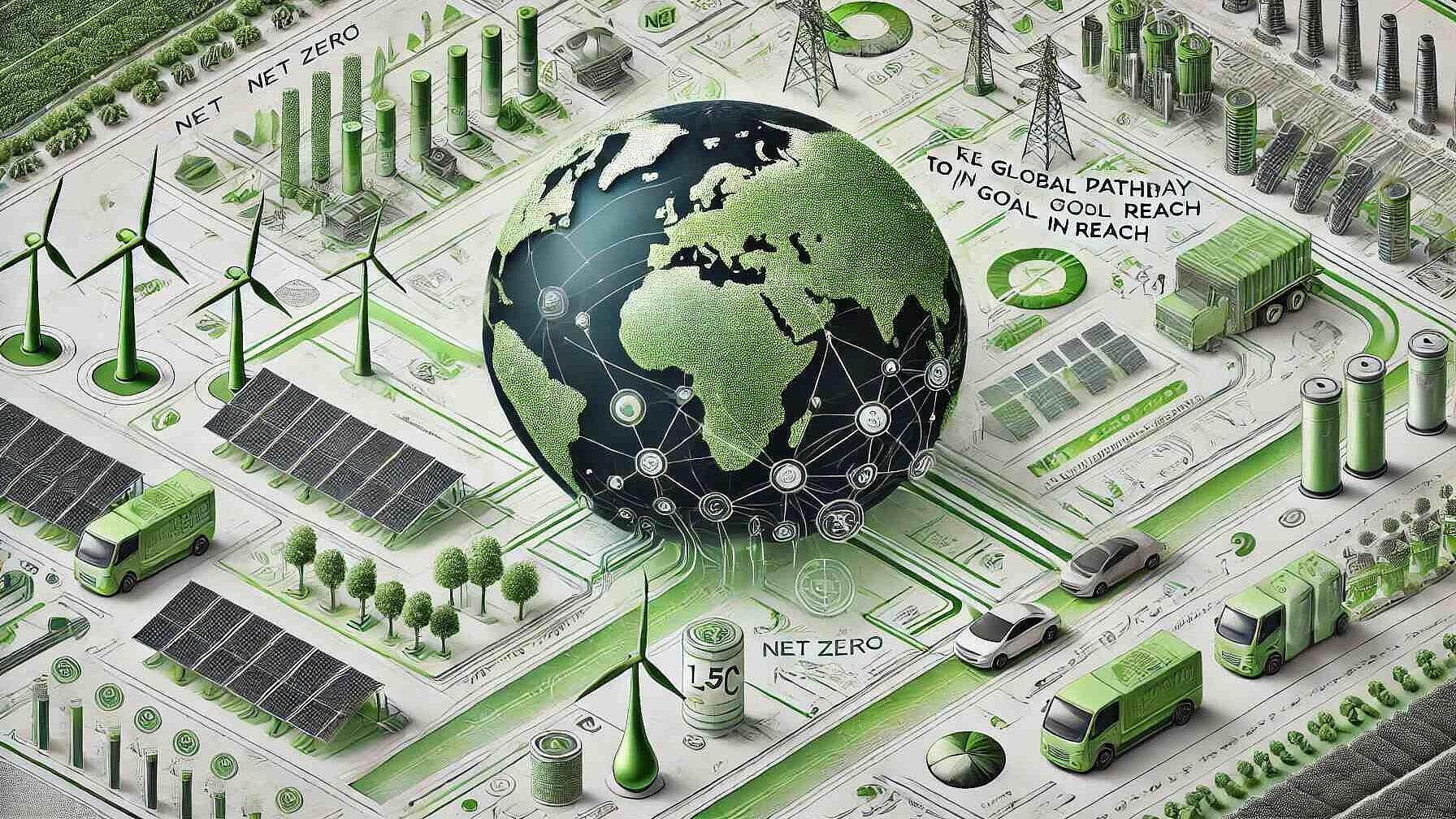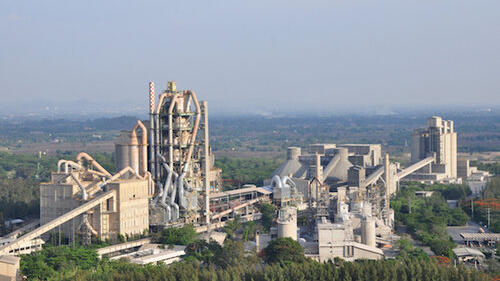 Renewable Energy
Renewable EnergyAccelerating the Clean Energy Transition: An Updated Roadmap to Net Zero Emissions
Resumo
The IEA's 2023 update to the Net Zero Roadmap reassesses the global energy landscape and confirms that although energy-related CO2 emissions hit a new high in 2022, the increase in clean energy deployment and innovation signals progress towards a greener future. The report sets an ambitious goal of a 35% reduction in CO2 emissions by 2030 from 2022 levels, emphasizing the necessity of scaling up established clean technologies like solar PV, wind power, and electric vehicles, which are expected to account for significant emissions reductions.
Four main milestones are pinpointed for achievement by 2030: tripling renewable energy capacity, doubling energy efficiency improvements, the electric vehicles market share reaching over 65% for car sales, and slashing methane emissions from fossil fuels by 75%. Current technologies can deliver more than 80% of the needed emissions reduction by 2030, driving fossil fuel demand down by over 25% under the Net Zero Emissions (NZE) Scenario.
For industries and sectors that are more difficult to decarbonize, the report underlines the importance of accelerating the development and deployment of emerging technologies like carbon capture and storage, low-emissions hydrogen, and advanced biofuels. International cooperation is deemed essential, including solutions for critical mineral supplies, technology transfer, and raising capital for clean energy investments, especially in developing economies.
The updated NZE Scenario also acknowledges the diverse timelines for net-zero achievements across different regions but underscores the crucial and ambitious actions required in this decade. The IEA suggests that the economic impact of the transition would lead to lower relative energy sector costs as a percentage of global GDP by 2050 and that clean energy investments can offset reduced expenditure on fossil fuels. Energy security remains a pertinent concern, with the emphasis on the need to manage new risks arising from the shift to clean energy infrastructures.
In summary, the IEA's report offers a comprehensive plan and a clarion call for immediate, global-scale advancements in clean energy to maintain the 1.5°C climate goal within reach, outlining the necessity of a dynamic and collective approach to achieve the transition to a secure and decarbonized energy future.
Artigo aberto completo
Accelerating the Clean Energy Transition: An Updated Roadmap to Net Zero Emissions
The global energy landscape has undergone significant shifts since the International Energy Agency (IEA) published its landmark Net Zero by 2050 report in 2021. While energy-related CO2 emissions reached a new record high in 2022, there are also signs of progress in clean energy deployment and innovation. The IEA's 2023 update to its Net Zero Roadmap provides a renewed pathway for limiting global warming to 1.5°C, taking stock of recent developments and outlining the critical actions needed this decade.
The updated Net Zero Emissions by 2050 (NZE) Scenario sees global energy-related CO2 emissions falling by 35% by 2030 compared to 2022 levels. This ambitious but achievable goal relies heavily on rapidly scaling up existing clean technologies. Solar PV and wind power alone deliver about one-third of emissions reductions by 2030 in the scenario. Electric vehicles also play a major role, with their share in car sales soaring to over 65% globally by 2030.
"The extraordinary surge in clean energy investment is keeping the door to 1.5°C open, but much more needs to be done and time is short," said IEA Executive Director Fatih Birol. "We need to see an unprecedented acceleration in clean energy deployment and innovation this decade."
The scenario outlines four key milestones for 2030:
- Tripling global renewable energy capacity
- Doubling the annual rate of energy efficiency improvements
- Raising the share of electric vehicles in car sales to over 65%
- Reducing methane emissions from fossil fuel operations by 75%
Crucially, the analysis finds that technologies available today can deliver over 80% of the emissions reductions needed by 2030. The rapid deployment of renewables, energy efficiency measures, and electrification are projected to drive fossil fuel demand down by more than 25% this decade in the NZE Scenario.
However, emerging technologies will be essential for achieving net zero emissions by 2050, particularly for hard-to-abate sectors like heavy industry and long-distance transport. The report highlights the need to accelerate innovation and demonstration of technologies like carbon capture and storage, low-emissions hydrogen production, and advanced biofuels.
One area of innovation that could contribute to decarbonizing industry is the development of structured reactors heated by renewable electricity, as pursued by the EU-funded STORMING project. This breakthrough technology aims to convert fossil and renewable methane into CO2-free hydrogen and valuable carbon nanomaterials for battery applications, potentially offering a pathway to reduce emissions from traditionally carbon-intensive industrial processes.
The IEA emphasizes that international cooperation is crucial for achieving the rapid clean energy transition envisioned in the NZE Scenario. This includes addressing challenges in critical mineral supply chains, enhancing technology transfer and knowledge sharing, and mobilizing finance for clean energy projects in emerging and developing economies.
"Without fair and effective international cooperation, the transition to net zero emissions would be delayed by decades," the report states. It calls for a significant scale-up in concessional climate finance, estimating that USD 200-300 billion per year in public funding will be needed by the early 2030s to mobilize the required private capital for clean energy investments in lower-income countries.
The updated scenario also recognizes the differing circumstances of countries, projecting that advanced economies would reach net zero emissions around 2045 in aggregate, China around 2050, and other emerging and developing economies well after 2050. However, all countries need to take ambitious action this decade to keep the 1.5°C goal within reach.
Importantly, the IEA analysis shows that the massive increase in clean energy investment in the NZE Scenario is largely offset by reduced spending on fossil fuels. By 2050, energy sector investment and fuel bills are projected to be lower as a share of global GDP than they are today.
The report also addresses concerns about energy security in a rapidly changing energy system. While the shift to clean energy brings new challenges, like securing supplies of critical minerals, it also reduces traditional energy security risks associated with fossil fuel supply disruptions and price volatility.
"Getting to net zero by 2050 requires an enormous reallocation of capital. We need a major international push to scale up investment across the energy sector in line with the Net Zero Roadmap, with an emphasis on clean technologies and the infrastructure that is necessary to support them," said Dr. Birol.
The IEA's updated Net Zero Roadmap provides a comprehensive guide for policymakers, investors, and industry leaders on the key actions and milestones needed to achieve a 1.5°C-aligned energy transition. While the challenge is immense, the report shows that with rapid and concerted action, it is still possible to build a global energy system that is secure, affordable, and compatible with our climate goals.
As the world looks ahead to the COP28 climate conference later this year, the IEA's analysis offers both a stark warning about the urgency of the climate challenge and a blueprint for transforming the global energy system. The choices made in the coming years will be critical in determining whether the world can successfully navigate the path to net zero emissions and a more sustainable future.
Source: https://www.iea.org/reports/net-zero-roadmap-a-global-pathway-to-keep-the-15-0c-goal-in-reach



